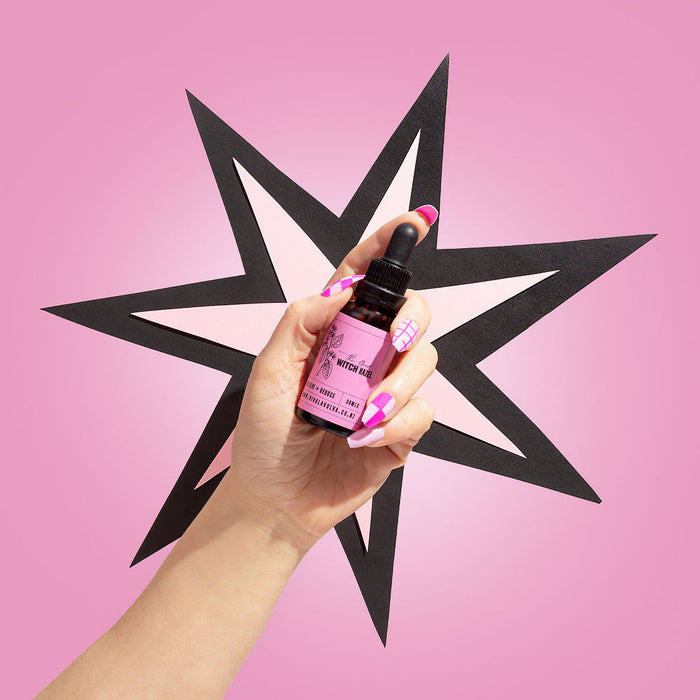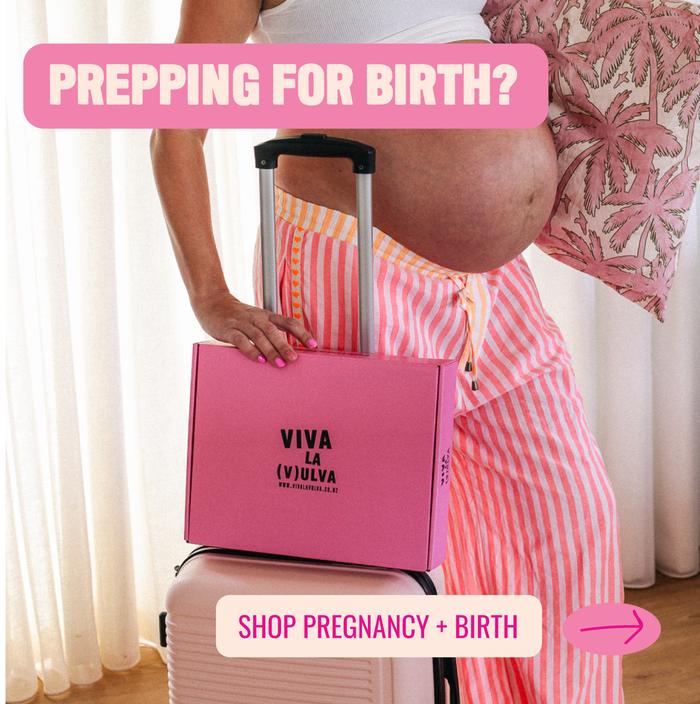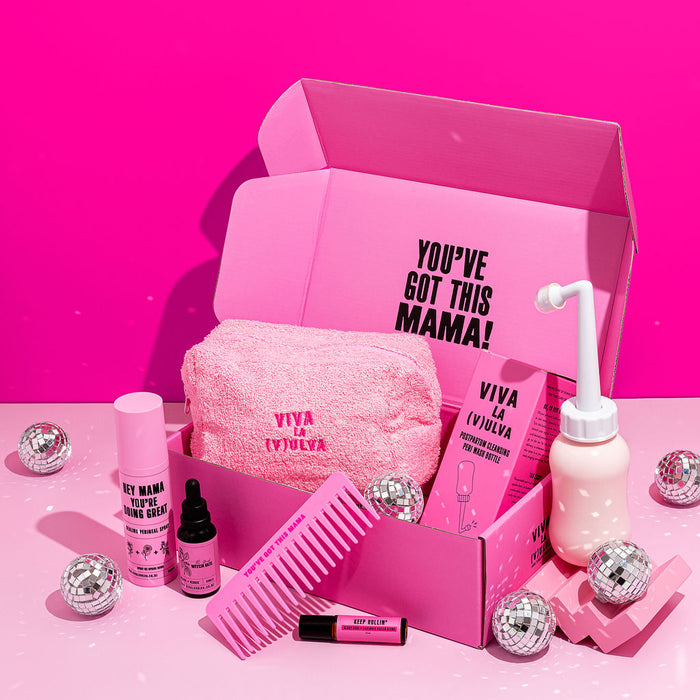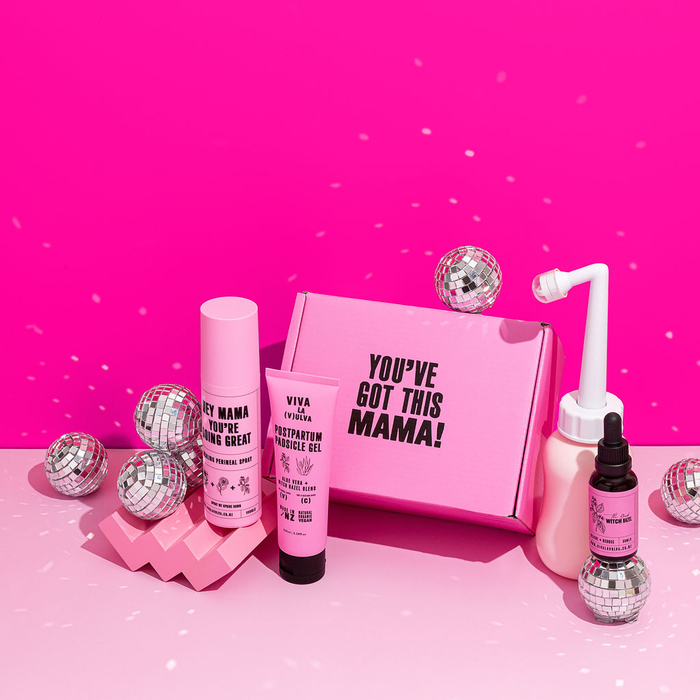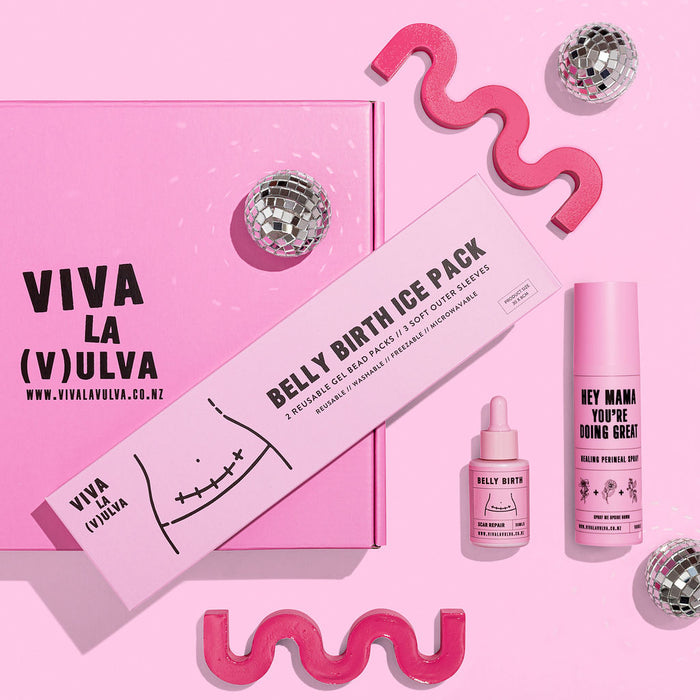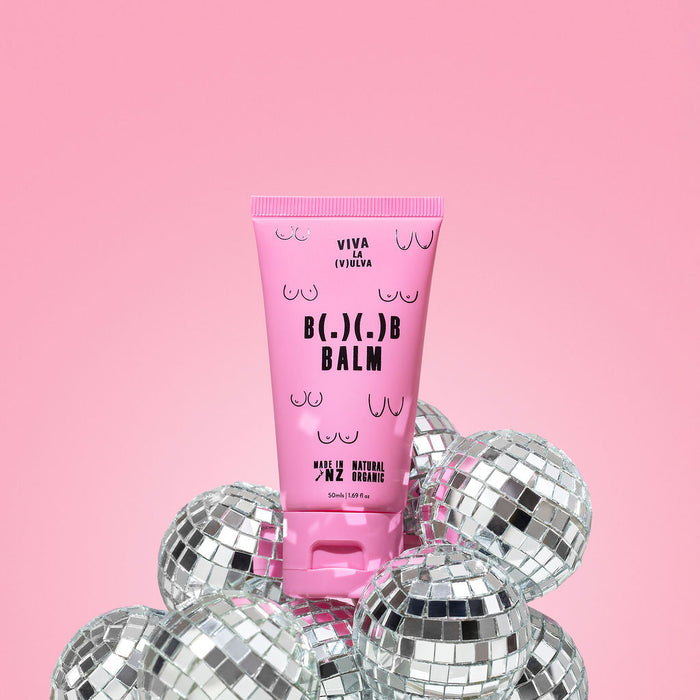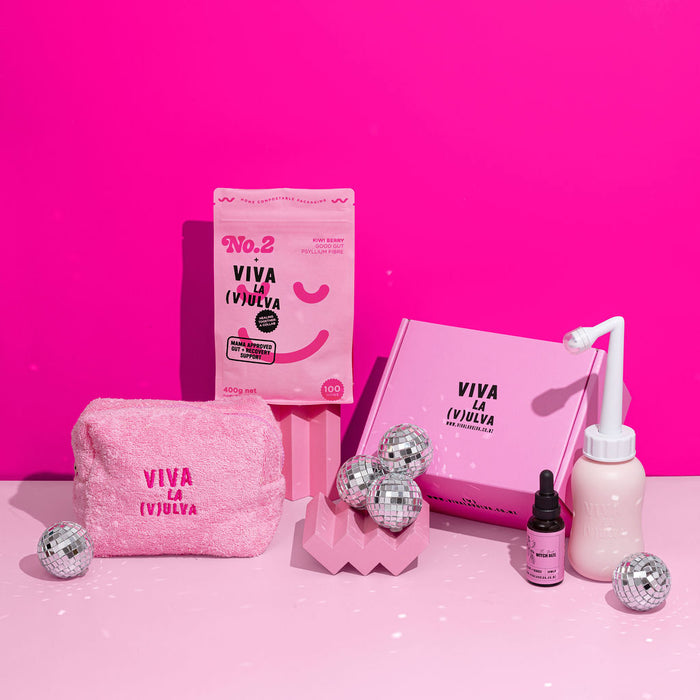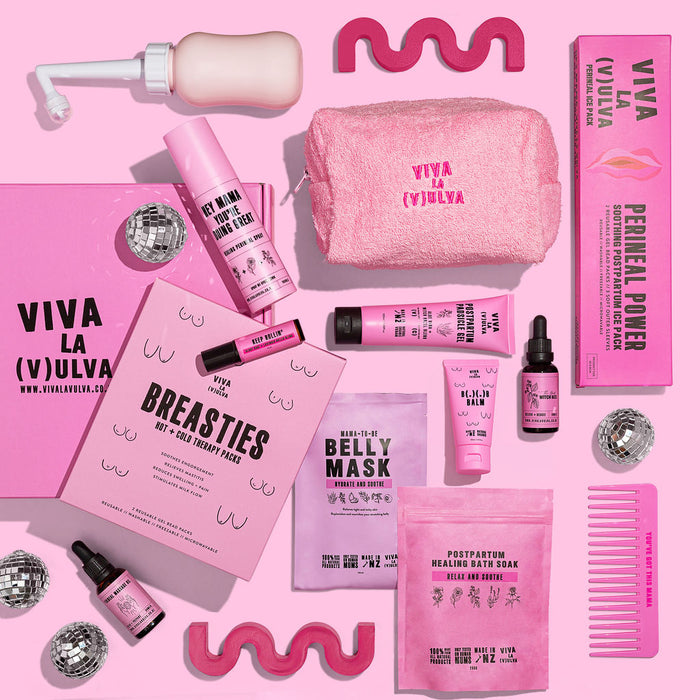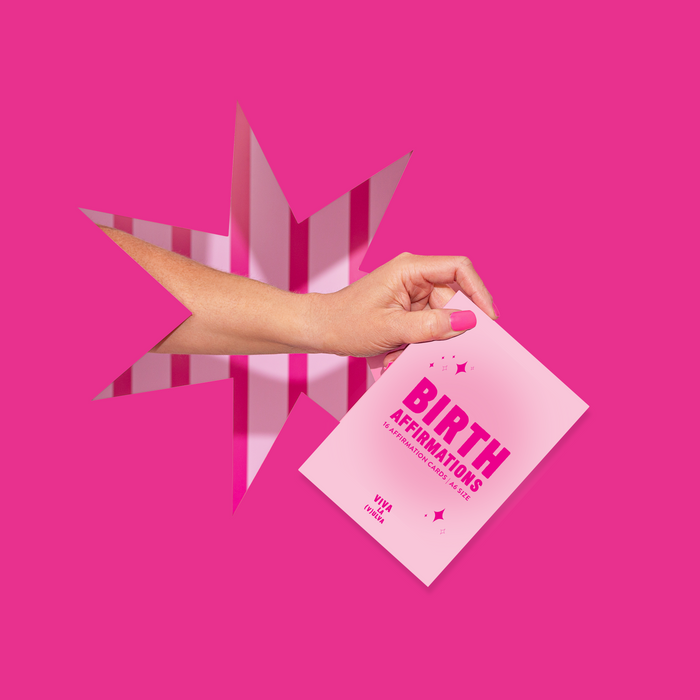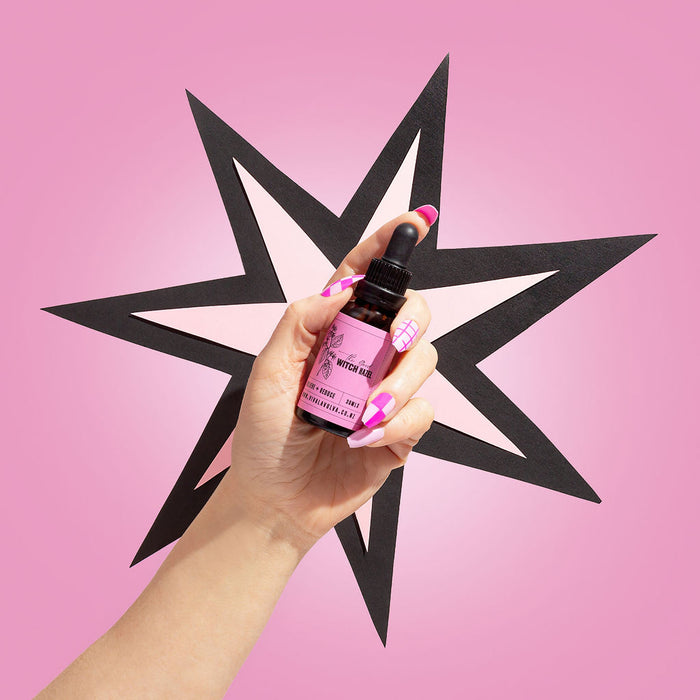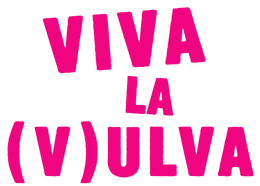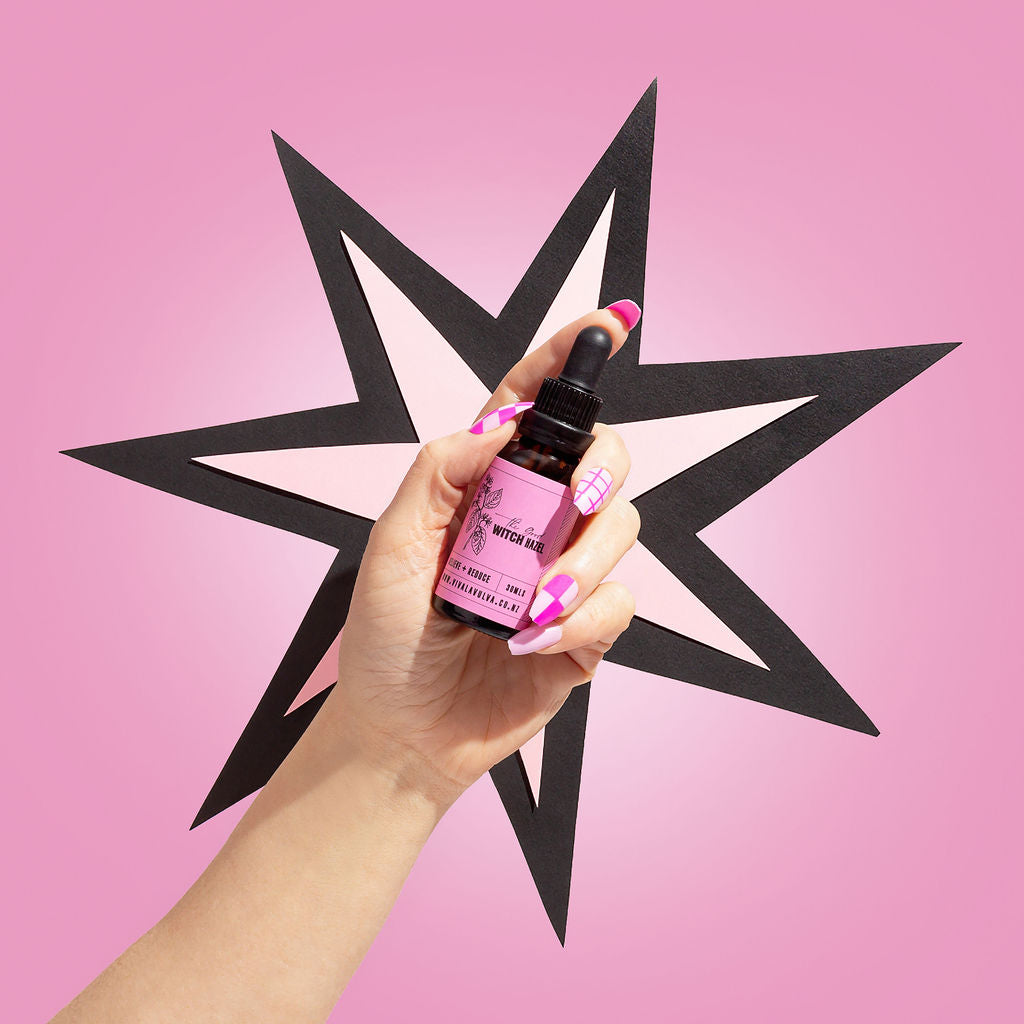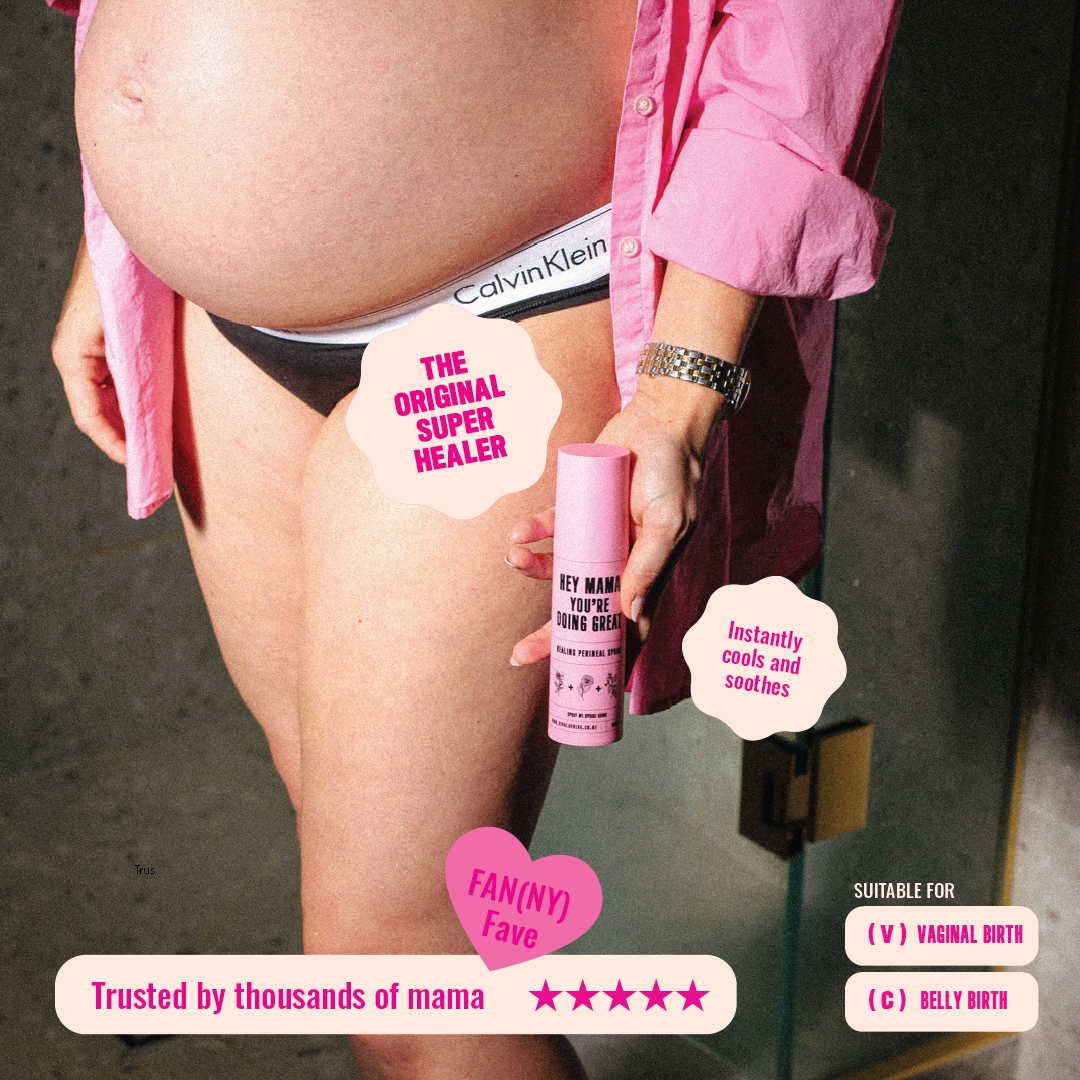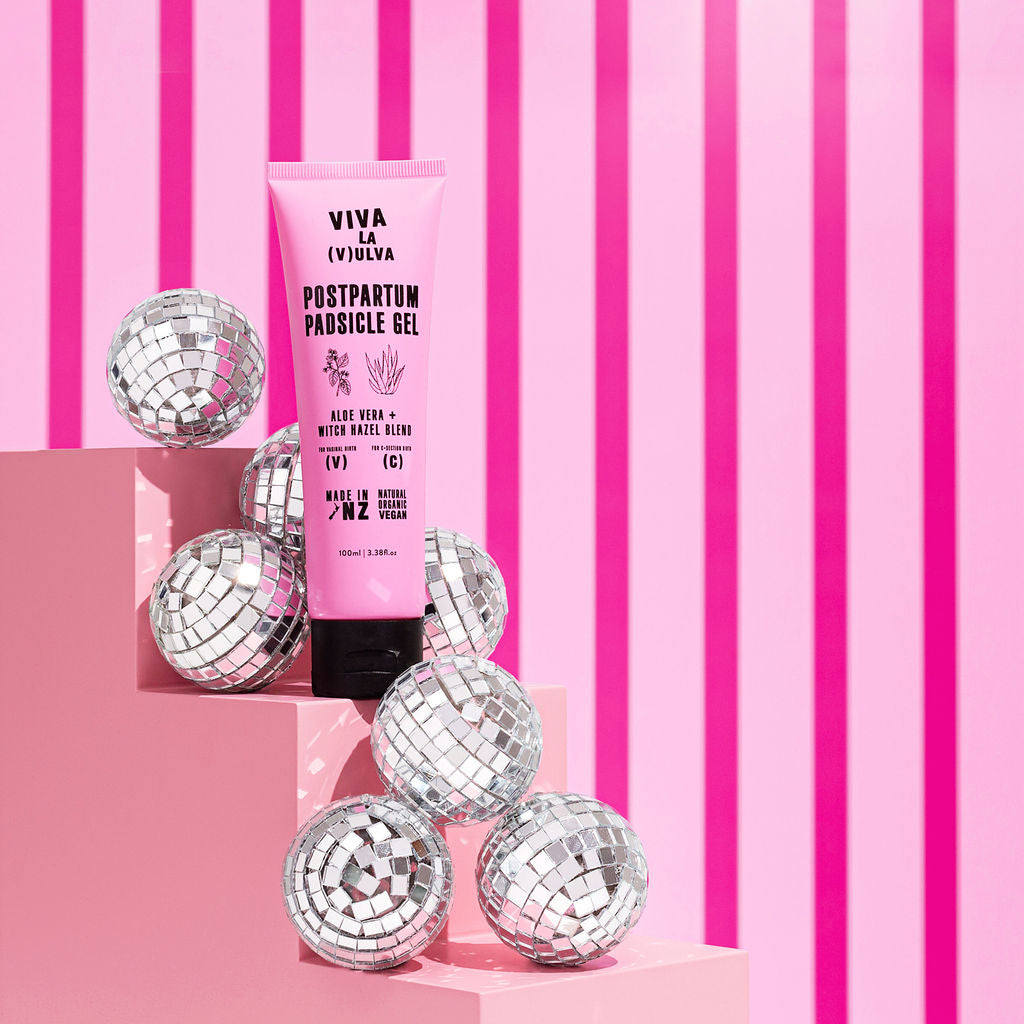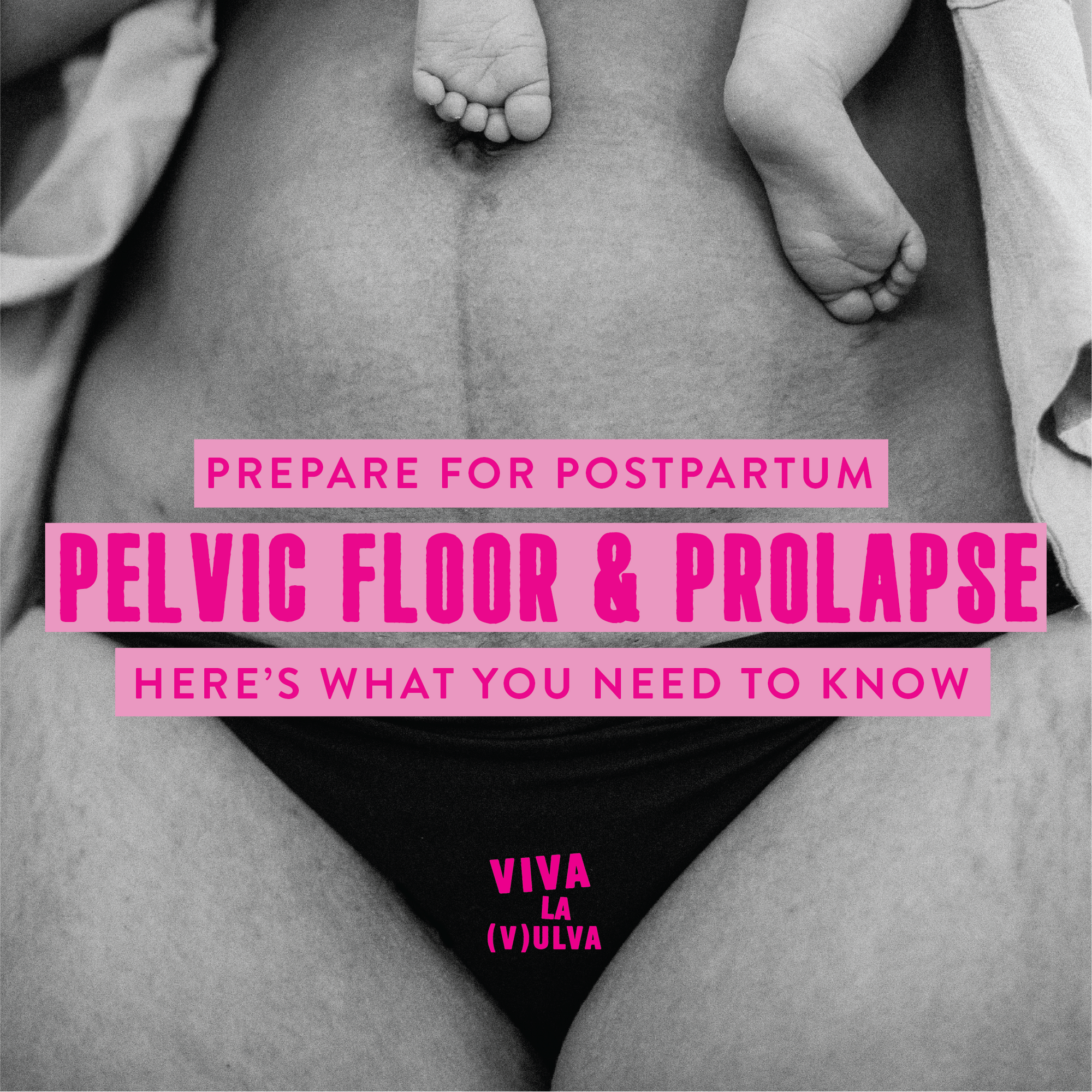
Pelvic Floor & Prolapse, Here's What You Need To Know
Viva La Vulva’s prepared for postpartum series offers real talk about what to expect, tips and tricks to help you navigate changes and ways to prepare for all things postpartum!
Having a baby is exciting, yes, and it’s also a huge adjustment. And at Viva La Vulva we believe an educated mama is an empowered mama! Just as all pregnancies and births are completely unique, all postpartum journeys are too. How you deliver your baby will affect the way you heal and recover. We want to make sure you go into the fourth trimester (and beyond) as prepared as you can be knowing exactly what to expect from your body in the weeks and months after birth.
While it’s totally necessary to educate yourself about pregnancy, labour and birth, preparing for postpartum is essential! You are giving your future self the best possible chance at healing comfortably and transitioning to motherhood gracefully.
Your body changes a lot after you give birth, changes that are physical and some emotional. In Part 3 of our preparing for postpartum series, we are serving up some real talk about Pelvic Floor & Prolapse… We talk about what to expect, share tips and tricks to help you navigate these changes and offer ways to prepare and look after your pelvic floor to avoid prolapse.
Can we just say thank you for being here. And now that you’re here let’s take a quick minute to recognise 👏🏼 you and your incredible 👏🏼 body! If you’re growing a baby(ies), if you’ve recently birthed, or if you're well into your postpartum recovery journey please acknowledge yourself, you are an incredible mama, honour what your body has achieved, honour your mind, and celebrate both, because at Viva La Vulva WE ARE!
*Disclaimer. Mamas, please know that this information is not intended to act as or replace any medical advice, if you have questions or you are concerned at any time ask your lead maternity carer (LMC).
In case you missed previous parts of our Prepared for Postpartum series, read more here - here’s what to expect and how to prepare for Vaginal Delivery and C-section Delivery.
BODY AFTER BABY AND WHAT TO EXPECT POSTPARTUM - AND WE’RE NOT TALKING ABOUT ‘BOUNCING BACK’
Let’s talk about some of the physical changes that you might experience in the weeks/months after giving birth, some ways to ease the discomfort and some postpartum essential items to have on hand to make it a little easier!
Your body is changing through pregnancy and birth. Growing a human, birthing that tiny human and healing… are all massive accomplishments! Mama, it is so important that you give yourself, and your miraculous body, the space and time to heal. And know it can take time to adjust to your body post-birth as things may look and feel a little different. Things may not go back to how they were before and that’s okay, please know it’s also okay to grieve your ‘pre-baby’ body. It’s all about nurturing your mind and nourishing your body at this time. Be kind to yourself, mama. Take your time, there is no rush! And remember every body heals and recovers differently.
PELVIC FLOOR AND PROLAPSE
Think of the pelvic floor muscle as a hammock that supports your bladder, uterus and bowel. During pregnancy and vaginal birth, this muscle can stretch up to 2.5 times its resting length and can stretch even more if you have forceps, suction or are pushing for a long time in labour. Seeing a pelvic floor physio if you're concerned or having any issues in the months after birth is a really good idea, as incontinence or prolapse can occur for one in three women. Sometimes without us knowing it and not always straight after birth. Unfortunately, issues can crop up later on too, up to a year or even years after you’ve given birth. This can look like weeing yourself when running or jumping, or just general feelings of heaviness that don’t go away. Make sure to get checked if you’re worried and go easy on yourself mama!
WHAT IS PROLAPSE?
A prolapse happens when the walls of the vagina have been stretched and can’t support one or more of the pelvic organs - bladder, uterus, rectum - which means they may fall down into the vaginal area. Like vaginal tearing, there are different degrees of prolapse. It is treatable, and usually with time will improve, once you’ve finished breastfeeding your hormones tend to regulate which also helps reduce relaxed ligaments and stabilise meaning the pelvic floor will be able to work better.
This is why everyone’s always talking about doing pelvic floor exercises frequently during pregnancy and after because these exercises can save you a lot of grief in the long run!
No one wants to pee themselves and pelvic floor exercises can prevent urinary problems. Also know mama that if you find your incontinent (weeing) when pregnant, this isn’t indicative that it will happen once baby is here, there’s a lot of extra pressure on the bladder and pelvic floor muscles are working so hard to hold everything together. Work on strengthening your pelvic floor muscles during pregnancy and post-birth. You can do this sitting, standing, lying down - these are exercises you can do anywhere, anytime - no one will notice!
HOW TO DO PELVIC FLOOR EXERCISES:
Give yourself a few days/weeks after birth to recover and then start slowly introducing pelvic floor exercises again.
Squeeze and tighten your back passage (imagine you’re stopping a fart).
Squeeze and tighten your vagina (like you’re holding a tampon).
Squeeze and tighten your bladder (as if you’re stopping the flow of wee).
Hold the squeeze for a few seconds - you might only be able to do it for a couple of seconds until your muscles get stronger again. Later, try to count to 10.
Relax and then repeat about five times.
Try to do this many times a day, use your daily routines as reminders to do these exercises, i.e. when you’re brushing your teeth, feeding baby, watching TV, when you have a shower and when you get into bed at night.
Remember to keep breathing - don't hold your breath while you do this. If you're pulling in your stomach or squeezing your bottom when you squeeze, this means the wrong muscles are being used.
To test if you can feel if you’re using your pelvic floor muscles correctly try stopping your wee mid-flow. But avoid doing your exercises when weeing, as it might stop you from properly emptying your bladder.
IN CASE YOU MISSED PART 1 & PART 2 IN OUR PREPARED FOR POSTPARTUM SERIES - here’s what to expect and how to prepare for Vaginal Delivery and C-section Delivery.
Next up in Viva La Vulva’s preparing for postpartum series, we’ll be putting a spotlight on Breasts, you’ll need to get to know them.
Viva La Vulva’s prepared for postpartum series offers real talk about what to expect, tips and tricks to help you navigate changes and ways to prepare for all things postpartum!
xx VLV
